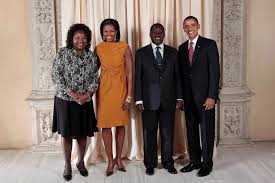Kenya’s cost of living rose slightly in September even as the economy continued to grow steadily, new government data shows.
According to the Kenya National Bureau of Statistics (KNBS), the country’s year-on-year inflation rate increased to 4.6% in September, up from 4.5% in August.
This means prices of basic goods and services were 4.6% higher compared to the same time last year.
The small rise was mainly caused by higher prices of food, transport, and housing, the bureau said in its latest monthly report.
“The food and non-alcoholic drinks category rose by 8.4%, transport by 4.0%, and housing, water, electricity, gas, and other fuels by 1.4%,” KNBS stated.
“Together, these three divisions account for over 57% of the total household spending.”
The Central Bank of Kenya (CBK) aims to keep inflation between 2.5% and 7.5%, allowing room for changes caused by global factors such as oil prices or bad weather.
Analysts say the latest figure shows inflation remains under control despite rising food and energy costs linked to global supply disruptions and a weaker shilling.
“This level of inflation suggests that Kenya’s monetary policies are holding steady,” said financial analyst Grace Otieno. “However, continued attention is needed on food prices, which affect most households.”
At the same time, Kenya’s economy grew by 5% in the second quarter of 2025, compared to 4.6% in the same period last year.
KNBS said this growth was driven mainly by the agriculture, transport, finance, and construction sectors, which showed strong performance after a year of challenges.
Agriculture, forestry, and fishing expanded by 4.4%, supported by improved weather and increased crop yields.
The transport and storage sector grew by 5.4%, helped by rising cargo and passenger movement.
Finance and insurance rose by 6.6%, reflecting a recovery in banking and lending activity.
Construction rebounded by 5.7%, while mining and quarrying surged by 15.3% after slowing down last year.
Electricity and water supply also recorded growth of 5.7%, up from only 1.2% in the same quarter of 2024.
During the quarter, the Kenyan shilling strengthened slightly against the U.S. dollar by 1.2%, but weakened against other major currencies — losing 6.5% against the Japanese yen, 4.5% against the British pound, and 4% against the euro.
Regionally, it weakened by 2.7% against the Ugandan shilling, but appreciated slightly against the Tanzanian shilling.
President William Ruto recently projected that Kenya’s economy will grow by about 5.6% in 2025, a higher forecast than those made by the National Treasury (5.3%) and the Central Bank (5.2%).
Economists say this growth will depend on continued stability in food prices, good weather, and stronger exports.
“The positive growth in key sectors shows that Kenya’s economy is on a recovery path,” said economist Dennis Musau. “But the government must keep supporting agriculture and manufacturing to cushion families from inflation.”
While inflation remains low and manageable, the government and central bank will continue monitoring key price drivers — especially food, energy, and transport — to ensure stability for households and businesses as the year ends.



